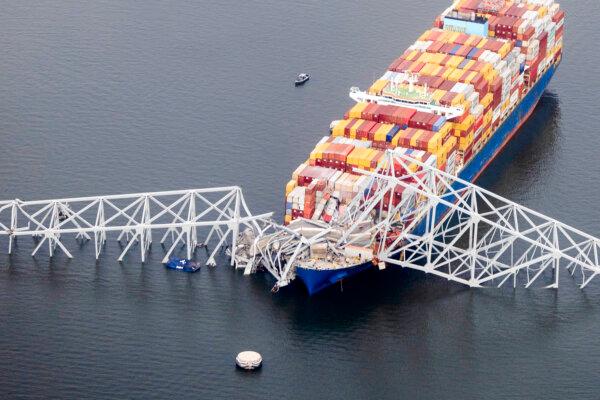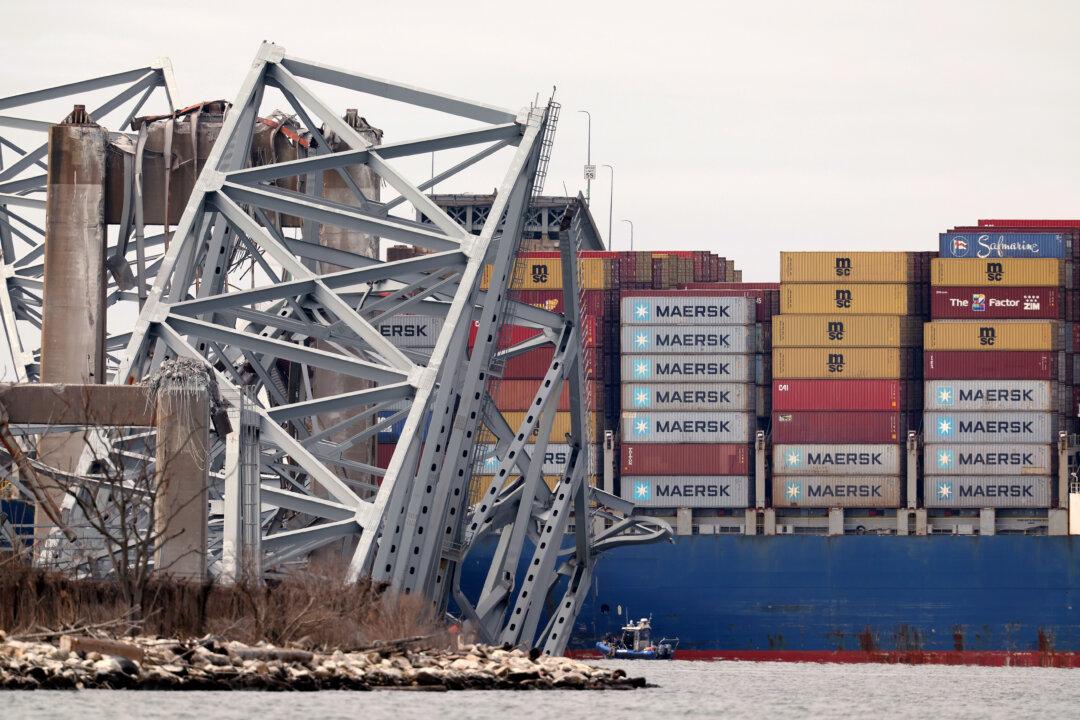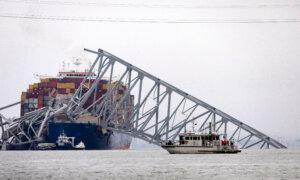More than 1,100 members of the U.S. Army Corps of Engineers (USACE) are being deployed to Baltimore, Maryland to assist recovery efforts following the collapse of the Francis Scott Key Bridge.
In a March 27 press release, the USACE’s Baltimore District said it has activated its Emergency Operations Center, “clearing the way for more than 1,100 engineering, construction, contracting, and operations specialists to provide support to local, state, and federal agencies” in the wake of the collapse.
“In accordance with federal authorities, USACE continues the effort to clear the Federal channel as part of the larger interagency recovery effort. Together with local, state, and federal partners, they are working closely to determine the actions required to remove the fallen debris,” officials said.
USACE is also providing underwater assessment capabilities, which include remotely operated vehicles and sonar, as well as structural engineering support and urban search and rescue structural technical specialists. A debris removal vessel named Reynolds is also involved in USACE’s operations.
Reynolds patrols the waters of the Baltimore Harbor and Patapsco River for drift and debris that could be hazardous to navigation, officials said. The corps will also use a 61-foot vessel, called the Catlett, to provide hydrographic and topographic surveying of the damage.
Recovery Efforts Ongoing
Baltimore District Commander Col. Estee Pinchasin said, “Our thoughts are with those impacted by the tragic collapse of the Francis Scott Key Bridge. Our Emergency Managers are closely monitoring the incident and coordinating with partner agencies for any potential support requests. We’ll continue to support the U.S. Coast Guard and other state and local agencies as needed.”The Francis Scott Key Bridge collapsed on March 26 after being struck by a 984-foot-long Singapore-flagged cargo vessel named Dali as it transited out of Baltimore Harbor, according to the National Transportation Safety Board (NTSB).
Eight people—believed to be construction workers who were filling in potholes on the bridge when the incident occurred—subsequently fell into the Patapsco River. Two of the individuals were rescued shortly after the collapse and are said to be in good condition despite sustaining injuries.
Police recovered the bodies of two more workers, who were discovered inside a pickup truck that was submerged approximately 25 feet below water in the Patapsco River, on March 27.
Hazardous Materials
Meanwhile, officials have confirmed that none of the 21 crew members and two pilots who were on board the 95,000 gross-ton container ship at the time it crashed sustained significant injuries.Speaking at a press conference, NTSB chair Jennifer Homendy told reporters there were roughly 764 tons of hazardous materials on board, consisting mostly of “corrosives, flammable, and some miscellaneous hazardous materials, class nine hazardous materials which would include lithium-ion batteries.”

Some of the hazmat containers were ultimately breached both in the water and on the vessel, she said.
Investigators are currently looking into what may have caused the incident, including the possibility that there was a power outage on the cargo ship before the impact.
In the meantime, vessel traffic has been suspended in and out of the Port of Baltimore as recovery efforts continue. The Biden administration has pledged federal funds to respond to the emergency and cover the cost of rebuilding the bridge.
“Everything so far indicates that this was a terrible accident,” President Biden said at a March 26 press briefing. “Our prayers are with everyone involved in this terrible accident and all the families, especially those waiting for the news of their loved one right now ... And to the people of Baltimore, I want to say: We’re with you. We’re going to stay with you as long as takes.”







